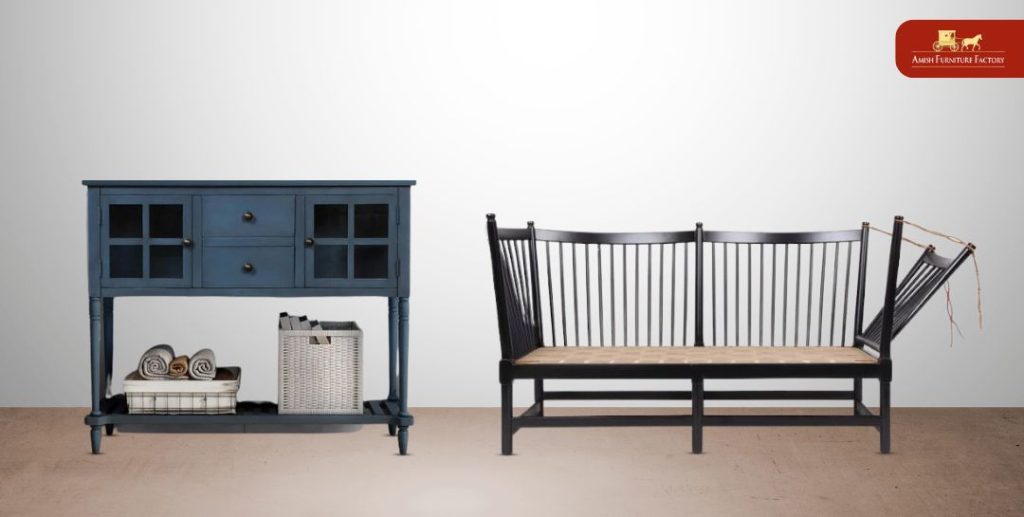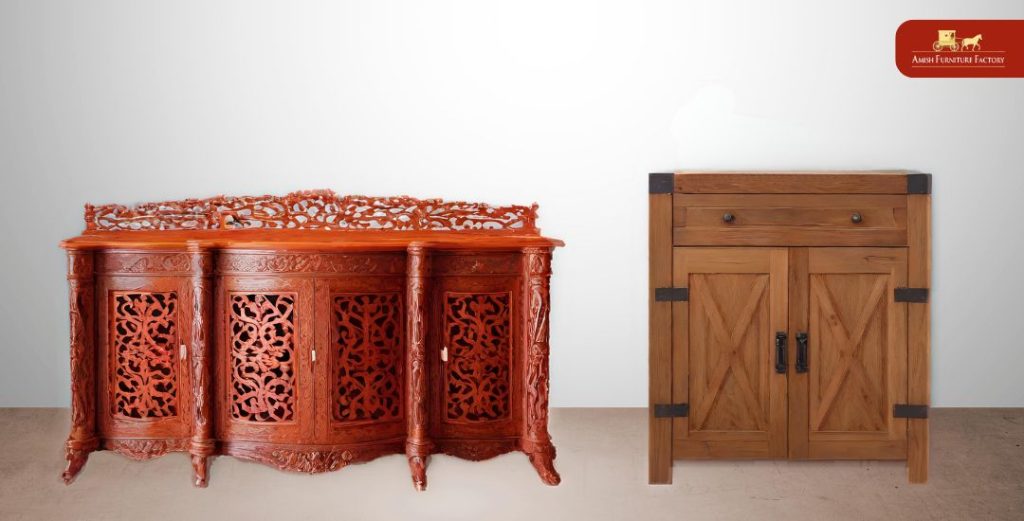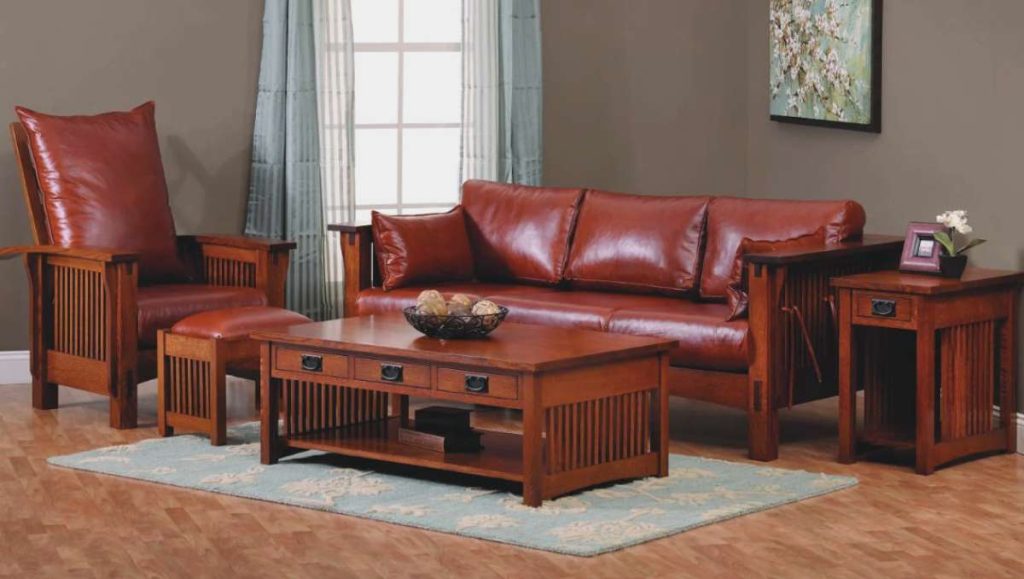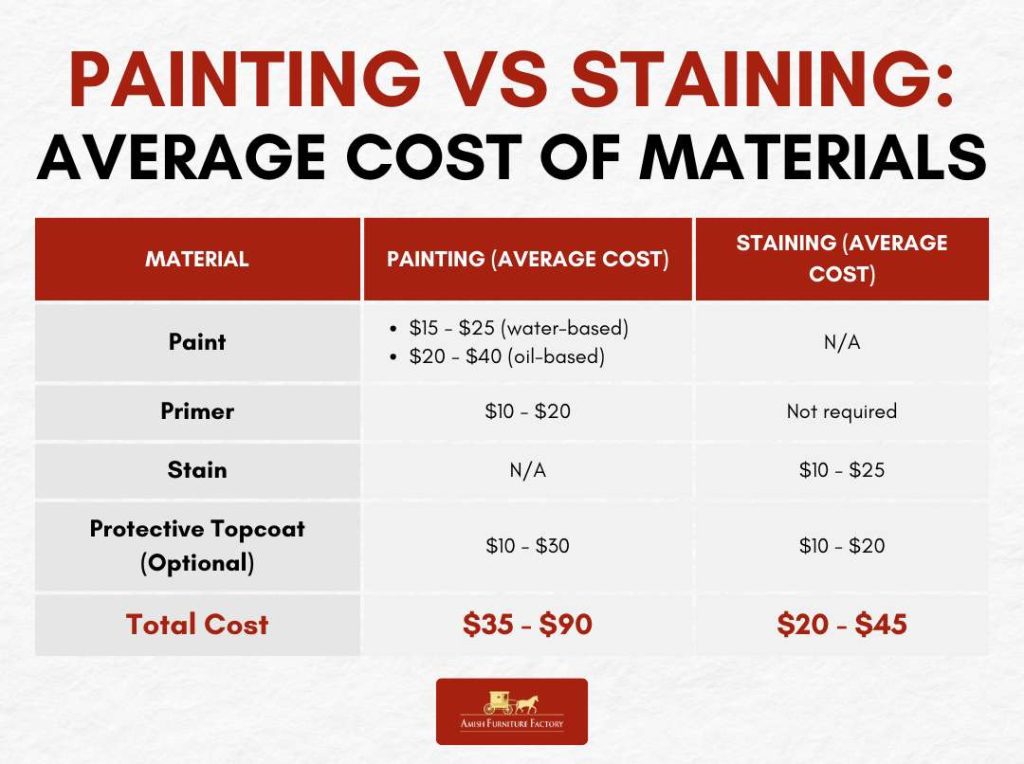
Choosing between paint vs stain furniture can dramatically impact not only the appearance but also the durability and longevity of your pieces. Both finishes bring unique benefits and have different effects on wood’s natural beauty, maintenance needs, and protection levels. Paint can offer a polished, colorful look that hides imperfections, while stain enhances the wood’s natural grain, providing a more classic, organic aesthetic.
Key Takeaways
- Painted furniture provides a robust protective layer, while stained furniture enhances the wood’s natural beauty and tends to show wear more gracefully.
- Paint is ideal for bold, vibrant transformations, whereas stain is perfect for preserving and showcasing the natural character of wood.
- The choice between paint and stain can also depend on the furniture’s location (indoor vs. outdoor) and the desired maintenance level, guiding consumers toward the best fit for their needs.
This guide breaks down the advantages and drawbacks of each option, helping you make an informed decision based on style preferences, practical needs, and the intended use of your furniture.
Painted Furniture
Painted furniture is achieved by applying a colored coating, or paint, onto the wood’s surface. The paint serves as both a decorative element and a protective layer. Paints come in two main types: water-based and oil-based. Water-based paints are known for their quick-drying properties, low odor, and they clean up easily with water. Oil-based paints offer a more durable and smooth finish, ideal for furniture pieces that undergo frequent use. Painted furniture can be customized with different finishes: matte, satin, and gloss.
Paint is an excellent option for many types of furniture, including those made from solid wood, MDF (medium-density fiberboard), or previously painted surfaces. Cabinets, shelves, tables, chests, and accent pieces like sideboards and frames benefit from paint, especially in contemporary or eclectic decor styles.

The global furniture paint market is experiencing steady growth, with an expected valuation of USD 9.57 billion by 2024, growing at a CAGR of 6.2%. This growth has been driven by consumers increasingly prioritizing aesthetic upgrades and functional furniture improvements, leading more people to invest in high-quality, premium paints in their living spaces.
Advantages of Paint
- Versatility: Paints come in an extensive variety of colors and finishes, allowing for limitless customization.
- Durability: When properly applied, paint can form a protective barrier against moisture, dust, and other environmental factors, helping preserve the furniture’s structure.
- Coverage of Imperfections: Paint can effectively mask minor dents, scratches, and uneven surfaces.
- Ease of Cleaning: Gloss and satin finishes in particular offer easy-to-clean surfaces.
Disadvantages of Paint
- Maintenance: Painted surfaces, especially in high-gloss finishes, can show fingerprints, dust, and scratches more easily.
- Potential for Peeling: Without proper priming and sealing, paint can chip or peel, especially on surfaces frequently exposed to moisture.
- Reduced Natural Appeal: Unlike stain, paint can conceal wood’s natural character, which may not be desirable for those seeking an organic, earthy aesthetic.
- Environmental Concerns: Oil-based paints, in particular, release VOCs, which can be harmful in enclosed spaces without adequate ventilation.
Stained Furniture
Stained furniture is treated with a coating designed to enhance and preserve the natural beauty of wood. Stains penetrate the surface, highlighting the wood’s unique grain patterns and textures. Similar to paints, stain colors are available in water-based and oil-based varieties. Transparent stains provide a clear finish that showcases the wood’s beauty without altering the natural color. Semi-transparent stains allow wood grain to remain visible while enhancing its natural tones. Opaque stains offer a rich, uniform color similar to paint but with the texture of stain.
Stain is typically applied to hardwoods and other solid wood surfaces, as it enhances natural textures and patterns. Furniture pieces like dining tables, cabinets, bed frames, and other wooden items are ideal candidates for stain finishes, especially when a rustic or natural look is desired.

The wood stain market has seen notable growth, with U.S. sales alone valued at US$ 2.3 billion in 2023. This surge in demand reflects the rising popularity of natural-looking furniture in interior design, as well as an increased preference for finishes that bring out wood’s inherent charm.
Advantages of Stain
- Natural Aesthetic: Stain allows grain patterns and textures to remain visible and contribute to a timeless, organic look.
- Penetrative Protection: Unlike paint, stain penetrates into the wood fibers, offering better resistance to cracking, peeling, and fading over time.
- Lower Maintenance: Stained furniture generally doesn’t show scratches or scuffs as prominently.
- Environmental Considerations: Many stains, particularly water-based ones, have low VOC levels, making them a greener option.
Disadvantages of Stain
- Limited Color Range: Stains are often limited to earthy tones, which can restrict customization options.
- Less Coverage of Imperfections: Stains don’t hide flaws as effectively as paint.
- Requires Quality Wood: Since stain is meant to showcase wood grain, it’s generally better suited for high-quality, aesthetically pleasing wood.
- Time-Intensive Application: Achieving an even stain finish requires careful preparation, including sanding and applying multiple coats.
Durability and Maintenance

Painted furniture is more durable, as the paint forms a protective layer that shields against moisture, scratches, and wear, making it ideal for high-use items like kitchen cabinets and children’s furniture. Maintenance typically involves occasional touch-ups or a full repaint.
Stained furniture allows the finish to penetrate the wood, preserving its natural flexibility and resilience. Stain is less prone to peeling or chipping, making it a low-maintenance choice, especially for rustic or vintage styles. Over time, stained surfaces develop a patina, enhancing their character.
Aesthetic Considerations
For a bold, solid look, paint is ideal, offering vibrant colors that suit modern or eclectic styles. It’s perfect for repurposed items like chairs and tables.
Stain highlights the wood’s natural grain and tones, making it ideal for classic, rustic, or minimalist designs. It’s also better for outdoor furniture, as it protects against moisture and UV damage while preserving the wood’s appearance. For vintage or heirloom pieces, stain is preferable as it maintains the wood’s original character, while paint can conceal or damage its natural patina.
If you’re still unsure about whether to paint or stain your furniture, be sure to check out our extensive selection of furniture options to help you find the perfect piece for your home.
Environmental Impact
Paint, particularly oil-based, can release harmful VOCs (volatile organic compounds) that degrade indoor air quality and contribute to air pollution and climate change. Water-based, low-VOC, or zero-VOC paints offer more eco-friendly alternatives.
Stains, while typically lower in VOCs, still release solvents that can affect air quality. Choosing non-toxic wood stains can help minimize environmental impact and promote healthier indoor air.
Cost Comparison
The cost of materials for painting a furniture piece can vary widely depending on the type and quality of paint, primer, and finish. Staining, by comparison, is often less expensive but still depends on the type and quality of stain used.

In this breakdown, staining is generally more economical, especially since it often doesn’t require primer and, in many cases, already includes a protective finish.
The Bottom Line
Choosing between paint and stain for furniture comes down to the desired look, durability, environmental impact, and budget. Paint is a great choice for those looking to achieve bold colors and transform the appearance of a piece entirely, while stain is perfect for showcasing the natural beauty of wood. Both options offer unique benefits and trade-offs. Understanding the differences in application, maintenance, and costs will help ensure your choice aligns with your aesthetic and practical needs.
FAQs
Can you paint over stained furniture without sanding?
Yes, it’s possible to paint over stained furniture without sanding by using a primer specifically formulated to adhere to stained surfaces. Some paints are also self-priming.
Is stained furniture more durable than painted furniture?
Stained furniture tends to be more durable in terms of natural wear, as the stain seeps into the wood, reducing the risk of chipping or peeling.
How do I choose between painting and staining for outdoor furniture?
For outdoor furniture, both paint and stain have benefits, but stain generally holds up better under direct sunlight and fluctuating temperatures as it penetrates the wood. Paint can offer a strong protective layer, but it may require frequent maintenance or repainting.
What is the best type of paint or stain for wooden furniture used in high-traffic areas?
For high-traffic areas, choose a durable finish such as oil-based paint or a high-quality water-based enamel for painted furniture. For stained furniture, use a stain with a clear protective topcoat to guard against wear and scratches.
